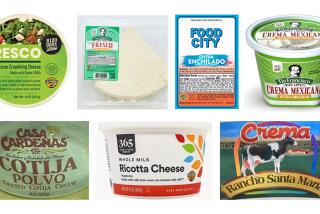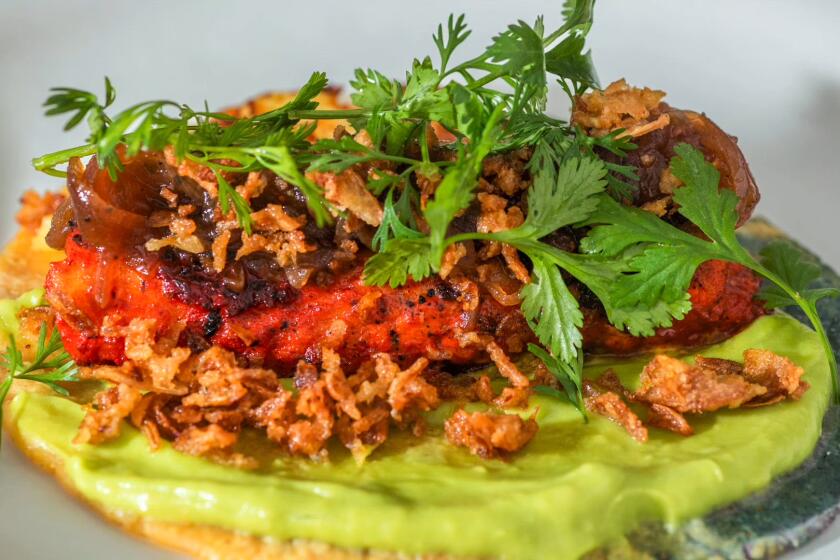Attack of the killer tomatoes
A proper insalata Caprese is one of the jewels of Campania’s incomparable cuisine.
All that’s required are ripe tomatoes just off the vine, fresh mozzarella di bufala, basil coaxed to aromatic fullness by the sun’s heat, a sprinkling of coarse salt, a grind of pepper and a drizzle of extra virgin olive oil. It’s a gloriously simple dish that happily reproduces the colors of the Italian flag and virtually stares up from the plate, whispering “high summer.”
The fact that you now can order some variation of it in February from half of America’s restaurant menus or supermarket takeout counters goes a long way toward explaining what’s behind the current national recall of tomatoes across the United States.
According to the Centers for Disease Control and Prevention, 167 people in 17 states have fallen ill from salmonella since mid-April. Twenty-three have been hospitalized, and one has died. Federal officials have traced the infections to three types of tomatoes -- contaminated plum, Roma and round red.
Initially confined mostly to Texas and New Mexico, the federal recall of the tainted produce went national over the weekend, and supermarkets across the country, including those in L.A., have removed the three suspect varieties from their shelves. On Monday, McDonald’s stopped adding a slice of tomato to hamburgers served in America, and the Los Angeles Unified School District “indefinitely suspended” serving uncooked tomatoes in its cafeterias.
Food and Drug Administration officials are working rapidly to identity the contamination’s source -- some reports say the search has narrowed to Florida and Mexico -- while stressing that it’s safe to eat all tomatoes grown in Arkansas, California, Georgia, Hawaii, North Carolina, South Carolina, Tennessee, Texas, Belgium, Canada, the Dominican Republic, Guatemala, Israel, the Netherlands and Puerto Rico.
But stop and think for a moment about the breadth of that list. The reason so many countries are selling tomatoes to this country is because of Americans’ demand to have fresh tomatoes on their Caprese salads (and in their sandwiches and salsa frescas and gazpachos) all year round -- and not just in the summer when they’re in season in the United States. This has created a global industry that now does $1.27 billion a year in business.
The notion that a globalized produce market will provide us with Chilean grapes in December and New Zealand plums in January is now taken as a given. And Americans’ assumption that industrially organized production and transportation renders the seasons irrelevant is true -- but only up to a point.
For one thing, tomatoes and tree fruit grown and shipped in this fashion seldom come even remotely close to tasting the way a tomato or a peach is supposed to taste. More important for the purposes of this discussion, the same marvel of efficiency that makes it possible to pick a tomato in Guatemala and sell it fresh in a market in Bangor, Maine, a few days later creates a system that’s just as good at distributing disease as it is produce. When one packer’s tainted produce goes to three or four countries, what would have been a local problem becomes an international one.
Vulnerable though it may be, the global produce industry is hugely profitable, which is why the FDA is at pains not to replicate what happened with last year’s great spinach scare. After a number of people fell ill from eating contaminated spinach, the whole national market for leafy greens suffered a temporary collapse, even though it quickly was shown that the bad produce came from just a few fields in Salinas.
When what’s at stake is people’s continued willingness to spend more than a billion dollars a year on factory-grown tomatoes that taste like cotton, you can bet the feds are being particularly careful this time.
There is, however, a deeper issue to consider. For some years now, the International Monetary Fund and the World Bank have been encouraging Third World farmers to turn away from growing staple crops -- rice, corn, wheat, etc. -- and to concentrate instead on higher-value export crops, such as tomatoes and out-of-season vegetables and fruits, for the European and North American markets.
Agricultural economists argued that staples could be grown more efficiently in developed countries and then inexpensively imported. Growing pricey specialty vegetable and fruit crops was supposed to be a pathway up to the cash economy and out of the poverty of subsistence farming.
Higher oil prices, growing Asian affluence and a greater global taste for grain-fed beef, increasing use of biofuels and a weak dollar all have conspired to push global commodity prices up. Poorer nations are increasingly operating on the fringe of malnutrition. Take the case of Haiti, which used to grow all the rice its people consumed. Then international financial organizations began encouraging the country to buy its rice from the United States and have its farmers switch to growing ... you guessed it, tomatoes. Haiti, where people recently were killed in food riots, now is the world’s largest per capita importer of rice.
So the next time you get the urge for insalata Caprese in March, it is worth wondering -- as you stare at that plate of Guatemalan tomatoes and hydroponically grown Dutch basil -- whether it’s a wise choice. As far as the taste goes, don’t ask.
--
More to Read
Eat your way across L.A.
Get our weekly Tasting Notes newsletter for reviews, news and more.
You may occasionally receive promotional content from the Los Angeles Times.










